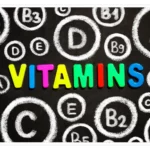Introduction
In today’s health-conscious world, understanding what goes into our bodies is more important than ever. As we navigate the vast sea of dietary advice, one term that frequently surfaces is nitrate. Commonly found in the foods we eat every day, from the leafy greens in our salads to the processed meats in our sandwiches, nitrates are a double-edged sword in the realm of nutrition. But what exactly are nitrates, and why do they matter for our health?
I've spent over five years exploring the intricacies of healthy living, and one thing I've learned is that knowledge is power—especially when it comes to our diet. Nitrates, or nitrate in food, as they are often referred to, are compounds that have sparked considerable debate among scientists, nutritionists, and health enthusiasts alike. On one hand, they're hailed for their potential benefits, such as lowering blood pressure and enhancing athletic performance. On the other, they're scrutinized for their association with health risks, including certain types of cancer.
This deep dive into Exploring Nitrate in Food: Unraveling its Health Implications aims to shed light on this complex topic. We’ll explore what nitrates are, how they end up in our food, and the science behind their health implications. By understanding the balance between their benefits and risks, you can make informed decisions about your diet and health. Let’s embark on this journey together, unravelling the myths, understanding the science, and discovering how to navigate the world of nitrates for better health.
Definition of Nitrate
Nitrates are naturally occurring compounds that play a crucial role in the environment and our diet. Chemically, they are composed of one nitrogen atom bonded to three oxygen atoms, symbolized as NO3-. These compounds are a part of the Earth's nitrogen cycle, making their way from the soil into the plants we eat and, consequently, into our bodies.
Common Sources of Nitrates
- Vegetables and Fruits: The primary source of nitrates in the human diet comes from vegetables and fruits. Leafy greens such as spinach, lettuce, and arugula, along with root vegetables like beets and carrots, are particularly high in nitrates. The levels of nitrates in these plants can vary significantly depending on the soil they are grown in, the use of fertilizers, and the method of farming.
- Processed Meats: Nitrates and nitrites (the latter being another form of nitrogen compounds) are commonly added to processed meats like bacon, ham, sausages, and deli meats as preservatives. They inhibit the growth of bacteria, enhance the pinkish color of the meat, and add a distinct flavor.
- Water: Drinking water can also be a source of nitrates, especially in agricultural areas where fertilizer use is high. Nitrates from fertilizers can leach into groundwater and surface water, becoming a part of the water supply.
- Fertilizers: Synthetic and organic fertilizers are rich in nitrates and are used widely in agriculture to promote plant growth. While beneficial for crops, excess runoff into water bodies can lead to elevated nitrate levels in water sources.

Prevalence in Various Foods
Nitrates are pervasive in the modern diet, found across a broad spectrum of foods, from natural to processed products. Their presence is not inherently negative; it reflects both the natural cycles of our ecosystem and the interventions of food technology for preservation and safety. Understanding the prevalence of nitrates in various foods helps demystify their role in our nutrition and guides us toward making informed dietary choices.
Natural Sources: Vegetables and Fruits
A significant proportion of dietary nitrates come from vegetables and fruits, with leafy greens like spinach, lettuce, and celery, and root vegetables such as beets and carrots leading the pack. These foods absorb nitrates from the soil, where nitrates serve as a vital nutrient promoting plant growth. The concentration of nitrates in these foods can vary greatly depending on factors like soil composition, the use of nitrate-rich fertilizers, and the method of agriculture (conventional vs. organic farming). Despite the variability, these natural sources are considered beneficial due to their co-occurrence with essential nutrients and antioxidants.
Processed and Cured Meats
Processed meats such as bacon, ham, sausages, and deli slices are well-known for their nitrate content. Here, nitrates (or their close relatives, nitrites) are added intentionally as preservatives to prevent bacterial growth, enhance color, and improve flavor. While effective in food preservation, the health implications of consuming nitrates from these sources have prompted considerable debate and research, leading to innovations in meat processing and the development of nitrate-free alternatives.
Water Supply.
Water, an essential daily intake, can also be a source of nitrates, especially in regions with intensive agriculture. Fertilizer runoff, improper waste disposal, and natural deposits can lead to elevated nitrate levels in groundwater and surface water. Drinking water with high nitrate levels is a health concern, particularly for infants and pregnant women, underscoring the importance of monitoring and regulating water quality.
Dairy Products and Grains
While less frequently discussed, dairy products and grains can also contain nitrates, albeit typically at lower levels compared to vegetables and processed meats. The nitrate content in these foods usually originates from the water the animals drink or the soil where the feed and grains are grown, highlighting the interconnectedness of our food ecosystem.
The widespread presence of nitrates in food illustrates the compound's integral role in both agriculture and food science. While nitrates from natural sources like vegetables and fruits are part of a healthy diet, awareness and moderation are key when it comes to processed foods and water consumption. By understanding the sources and prevalence of nitrates, consumers can navigate their dietary choices more effectively, optimizing their health benefits while minimizing potential risks.
The Nitrate-Health Connection
Understanding the connection between nitrates and health requires a closer look at how our bodies process these compounds and the potential risks associated with their consumption. Let's delve into the nitrate metabolism in the body and the concerns that have emerged from various studies.
Nitrate Metabolism in the Body
When we consume foods containing nitrates, our body goes through a complex process to metabolize these compounds. Here's a simplified overview:
- Ingestion and Conversion: After ingestion, the majority of nitrates are absorbed by the digestive system. Nitrates are then converted into nitrites by the bacteria in our mouth. This conversion is a critical step, as nitrites have more direct effects on our health than nitrates.
- Circulation and Further Conversion: The nitrites are then absorbed into the bloodstream, where they can be further converted into nitric oxide (NO) and other nitrogen compounds. Nitric oxide plays several crucial roles in our body, including vasodilation (expansion of blood vessels), which improves blood flow and lowers blood pressure.
- Excretion: Any unconverted nitrates are eventually excreted through urine, completing their journey through our body.
This metabolic pathway highlights the body's ability to utilize nitrates for beneficial purposes, such as enhancing blood flow and oxygen distribution. However, the process also introduces potential health risks under certain conditions.
Potential Health Risks
While the conversion of nitrates to nitric oxide can have beneficial cardiovascular effects, the intermediate compound—nitrite—can react with dietary components to form nitrosamines, compounds with known carcinogenic properties. The potential health risks associated with nitrate consumption primarily stem from this conversion process and include:
- Cancer: Studies have suggested a link between high nitrate intake from processed meats and an increased risk of certain cancers, such as gastric and colorectal cancer. This is believed to be due to the formation of carcinogenic nitrosamines when nitrites react with amines in the stomach.
- Methemoglobinemia: Also known as "blue baby syndrome," this condition affects infants who consume formula prepared with water containing high levels of nitrates. It occurs when nitrites in the bloodstream convert hemoglobin into methemoglobin, which cannot carry oxygen efficiently, leading to decreased oxygen delivery to tissues.
- Chronic Diseases: Some research indicates that long-term exposure to high levels of nitrates might be associated with other chronic conditions, such as diabetes and chronic obstructive pulmonary disease (COPD), although the evidence is not as strong as it is for cancer risk.
Nitrate Levels: Understanding the Limits
Navigating the landscape of nitrate consumption involves not just understanding where nitrates come from, but also knowing how much is safe. Regulatory standards have been established to guide safe levels of nitrate intake, while various monitoring and testing methods allow for the assessment of nitrate levels in food and water. Let's delve into the details of these standards and the techniques used to ensure safety.
Regulatory Standards: What Are the Safe Levels?
Regulatory agencies around the world have set limits on the acceptable levels of nitrates in food and drinking water to protect public health. In the United States, the Environmental Protection Agency (EPA) has established a maximum contaminant level (MCL) for nitrates in drinking water:
- 10 milligrams per liter (mg/L) or 10 parts per million (ppm) for nitrates measured as nitrogen (NO3-N).
This standard is designed to prevent methemoglobinemia, also known as "blue baby syndrome," a condition that can occur in infants who consume water or formula with high levels of nitrates. Similar regulatory standards are in place in the European Union and other parts of the world, with slight variations in the limits based on local assessments of risk and exposure.
For food, specific nitrate levels are regulated in processed meats, with guidelines varying by country. These regulations aim to limit the addition of nitrates and nitrites as preservatives to levels deemed safe for consumption, balancing their role in food safety with the potential health risks.
Monitoring and Testing: Techniques for Measuring Nitrate Levels

Monitoring and testing for nitrates are crucial in ensuring that food and water comply with regulatory standards. Various techniques are employed by regulatory bodies, water suppliers, and food producers to measure nitrate levels:
- Water Testing: Methods such as ion chromatography and spectrophotometry are standard for testing nitrate levels in water. These tests can accurately quantify the concentration of nitrates, allowing for regular monitoring of drinking water and environmental water sources.
- Food Testing: For food, especially processed meats, high-performance liquid chromatography (HPLC) and mass spectrometry are among the techniques used to detect and quantify nitrates and nitrites. These methods are crucial for ensuring that food products meet safety standards and for researching the nutritional content of fresh produce.
- This table represents generalized values, as actual nitrate levels can vary based on factors such as soil conditions, agricultural practices, and water sources.
- Notes:
- Fruits generally have lower nitrate levels compared to vegetables, making them a minimal source of dietary nitrates.
- Leafy Vegetables are among the richest sources of nitrates, beneficial for blood pressure regulation but should be consumed in moderation due to potential health risks when consumed in excessive amounts.
- Root Vegetables also contain significant amounts of nitrates, with variations based on soil nitrate content.
- Other Vegetables have moderate nitrate levels, contributing to dietary intake without the high levels found in leafy greens.
- Processed Meats can contain added nitrates and nitrites for preservation, with potential health risks associated with high consumption.
- Fresh Fish typically has low nitrate content, posing minimal risk for nitrate exposure.
- Drinking Water standards limit nitrate levels to prevent health issues, with natural and anthropogenic sources contributing to variations in nitrate concentration.
- For individual use, portable nitrate testers have become available, enabling consumers to test the nitrate levels in fruits, vegetables, and water. These devices typically measure the electrical conductivity of the item being tested, providing an immediate estimate of its nitrate content.


This table represents generalized values, as actual nitrate levels can vary based on factors such as soil conditions, agricultural practices, and water sources.
| Food Category | Examples | Average Nitrate Levels (mg/kg or mg/L) |
|---|---|---|
| Fruits | Apples, Bananas | 10 - 50 |
| Leafy Vegetables | Spinach, Lettuce, Arugula | 1000 - 6000 |
| Root Vegetables | Beets, Carrots | 60 - 200 |
| Other Vegetables | Potatoes, Beans | 20 - 250 |
| Processed Meats | Bacon, Ham, Sausages | 10 - 300 (mg/kg, as sodium nitrite) |
| Fresh Fish | Trout, Salmon | < 20 |
| Drinking Water | Tap, Well | 0.5 - 10 mg/L (up to regulatory limit of 10 mg/L as NO3-N) |
Notes:
- Fruits generally have lower nitrate levels compared to vegetables, making them a minimal source of dietary nitrates.
- Leafy Vegetables are among the richest sources of nitrates, beneficial for blood pressure regulation but should be consumed in moderation due to potential health risks when consumed in excessive amounts.
- Root Vegetables also contain significant amounts of nitrates, with variations based on soil nitrate content.
- Other Vegetables have moderate nitrate levels, contributing to dietary intake without the high levels found in leafy greens.
- Processed Meats can contain added nitrates and nitrites for preservation, with potential health risks associated with high consumption.
- Fresh Fish typically has low nitrate content, posing minimal risk for nitrate exposure.
- Drinking Water standards limit nitrate levels to prevent health issues, with natural and anthropogenic sources contributing to variations in nitrate concentration.
Impact on Cardiovascular Health
The relationship between dietary nitrates and cardiovascular health has been a focal point of nutrition and medical research. Understanding how nitrates influence blood pressure regulation and their potential connection to heart disease is essential for forming dietary recommendations and managing risk factors for cardiovascular conditions.
Nitrate and Blood Pressure: Benefits of Nitrates on BP Regulation
Nitrates, when consumed through a diet rich in vegetables, can have beneficial effects on blood pressure. The process begins with the conversion of nitrates (NO3-) to nitrites (NO2-) by the bacteria in the mouth. These nitrites are then further converted into nitric oxide (NO) in the stomach and blood, a molecule that plays a crucial role in vascular health.
Nitric oxide acts as a vasodilator, meaning it relaxes the inner muscles of the blood vessels, causing them to widen. This dilation improves blood flow and reduces the pressure exerted against the vessel walls, effectively lowering blood pressure. The short-term effects of nitrate-rich meals, such as a decrease in blood pressure, have been documented in numerous studies, suggesting that nitrates may contribute to cardiovascular health by aiding in blood pressure regulation.
The beneficial impact of dietary nitrates on blood pressure has particularly been observed with the consumption of beetroot juice and leafy green vegetables, foods known for their high nitrate content. These natural sources of nitrates offer a potential dietary approach to managing blood pressure, especially for individuals at risk of hypertension and its complications.
Relationship to Heart Disease: Examining the Evidence
The link between dietary nitrates and heart disease is an area of ongoing research. The available evidence suggests that a diet high in natural sources of nitrates could contribute to a reduced risk of cardiovascular diseases. This protective effect is thought to be primarily due to the vasodilatory properties of nitric oxide, which not only lowers blood pressure but also improves endothelial function and reduces arterial stiffness.
However, the source of nitrates matters. While nitrates from vegetables are associated with cardiovascular benefits, nitrates and nitrites from processed meats have been linked to an increased risk of heart disease among other health issues. The differing health outcomes highlight the importance of consuming nitrates from healthy food sources, such as vegetables, rather than from processed foods.
The current body of evidence supports the inclusion of nitrate-rich vegetables in the diet as a strategy for cardiovascular disease prevention. Nonetheless, more long-term studies and clinical trials are needed to fully understand the relationship between dietary nitrates, blood pressure regulation, and the risk of heart disease. As research continues to evolve, dietary recommendations may be refined to further leverage the cardiovascular benefits of nitrates while minimizing potential risks.
Nitrate and Digestive Health
The impact of dietary nitrates on digestive health is a multifaceted subject, encompassing both beneficial and potentially adverse effects. The interaction with gut microbiota and the implications for gastrointestinal (GI) health are areas of growing research interest. Understanding these dynamics can help us navigate dietary choices that support overall wellness.
Gut Microbiota Interactions: Nitrates' Effect on Gut Health
Dietary nitrates can influence gut health through their interactions with the microbiota in the gastrointestinal tract. The conversion of nitrates to nitrites, a crucial step in nitrate metabolism, is facilitated by bacteria in the mouth and gut. This process can have several implications:
- Positive Effects on Gut Microbiota: Some studies suggest that dietary nitrates can promote the growth of beneficial gut bacteria, contributing to a healthy gut microbiome. By supporting the proliferation of beneficial bacteria, nitrates may enhance gut health and function, potentially improving digestion and nutrient absorption.
- Nitric Oxide Production: The conversion of dietary nitrates to nitric oxide (NO) in the body, including within the gastrointestinal tract, has been shown to have various beneficial effects, such as enhancing blood flow to the gut and modulating inflammatory responses. This can contribute to maintaining gut barrier integrity and protecting against GI disorders.
However, the interaction between dietary nitrates, gut microbiota, and health is complex and influenced by various factors, including the overall diet, individual health status, and the presence of specific bacterial strains capable of nitrate reduction.
Gastrointestinal Concerns: Potential Risks for the Digestive System
While there are potential benefits, excessive intake of nitrates, particularly from processed foods with added nitrates or nitrites, can pose risks to the digestive system:
- Formation of Nitrosamines: In the acidic environment of the stomach, nitrites can react with amines and amides from proteins to form nitrosamines, some of which are known carcinogens. This reaction raises concerns about the potential risk of gastrointestinal cancers associated with high intakes of processed meats rich in nitrates and nitrites.
- Gastrointestinal Distress: High levels of nitrates in the diet may lead to gastrointestinal distress in some individuals, including symptoms such as bloating, stomach cramps, and diarrhea. These effects are more commonly associated with the consumption of contaminated water or excessive amounts of nitrate-rich foods in a short period.
The balance between the potential benefits and risks of dietary nitrates on digestive health underscores the importance of moderation and source consideration. Consuming a diet rich in vegetables provides nitrates in a context that includes fiber, vitamins, and other nutrients, which can support gut health. Meanwhile, being mindful of the intake of processed foods with added nitrates can help minimize potential negative impacts on the digestive system.
Nitrate in Pregnancy
The impact of dietary nitrates during pregnancy is an area of considerable interest and concern due to the potential implications for both maternal and fetal health. Understanding how nitrates affect pregnancy can guide dietary choices to support the well-being of both the mother and the developing fetus.
Maternal and Fetal Implications: How Nitrates Affect Pregnancy
Nitrates, when consumed in moderate amounts through vegetables, can be part of a healthy diet during pregnancy, providing beneficial nutrients. However, high levels of nitrates, especially from contaminated water or processed foods, may pose risks:
- Methemoglobinemia: High nitrate intake can lead to methemoglobinemia, a condition where the blood's ability to carry oxygen is reduced. While rare, this condition is of particular concern for infants and can impact the fetus if the pregnant mother consumes high levels of nitrates.
- Impact on Thyroid Function: Nitrates can interfere with iodine uptake by the thyroid gland, potentially affecting thyroid function. Proper thyroid function is crucial during pregnancy for normal fetal brain development.
- Potential Risk of Adverse Pregnancy Outcomes: Some studies have suggested a link between high nitrate intake from contaminated water and adverse pregnancy outcomes, including preterm birth and low birth weight. However, research in this area is ongoing, and definitive conclusions have yet to be drawn.
Recommended Dietary Guidelines: Advice for Pregnant Women
Given the potential risks associated with high nitrate intake, pregnant women are advised to be mindful of their nitrate consumption, particularly from sources that might contain high levels:
- Consume Vegetables Wisely: Vegetables are a vital part of a healthy pregnancy diet, providing essential nutrients and fiber. Pregnant women should not avoid vegetables due to nitrate concerns but focus on a varied diet that includes plenty of fresh, whole produce.
- Limit Processed Meats: Due to the added nitrates and other considerations, pregnant women should limit the consumption of processed meats or opt for nitrate-free versions when available.
- Ensure Safe Drinking Water: It's crucial to drink water from safe sources. If high nitrate levels are a concern in your area, consider using bottled water or a water filtration system capable of reducing nitrate levels for drinking and cooking during pregnancy.
- Moderation is Key: As with all aspects of a healthy diet, moderation is important. Consuming foods with naturally occurring nitrates in moderation is unlikely to pose a risk and can be part of a balanced diet.
- Consult Healthcare Providers: Pregnant women should discuss their diet and any concerns about nitrate exposure with their healthcare provider, who can offer personalized advice based on their health history and the local environment.
Nitrate and Cancer Risk
The potential link between dietary nitrates and nitrites and the risk of cancer has been the subject of extensive research and debate within the scientific community. This section explores the findings of significant research on this topic and discusses the controversies and debates surrounding the interpretation of these findings.
Exploring the Research: Summary of the Study
A pivotal study titled "Nitrites and nitrates from food additives and natural sources and cancer risk" delves into the complex relationship between nitrate and nitrite consumption and the risk of developing cancer. The study examines both the naturally occurring nitrates found in vegetables and those used as additives in processed meats. The primary concern is the formation of N-nitroso compounds, which can occur when nitrites react with amines and amides in the acidic environment of the stomach or during high-temperature cooking processes.
Key Findings:
- Increased Risk with Processed Meats: The study highlights a stronger association between the consumption of processed meats, which contain added nitrates and nitrites, and an increased risk of certain cancers, including colorectal and stomach cancer.
- Vegetable Consumption: Conversely, the consumption of vegetables, despite their high nitrate content, is often associated with a reduced risk of certain types of cancer. This protective effect is attributed to the presence of antioxidants and other beneficial compounds in vegetables, which may counteract the formation of harmful N-nitroso compounds.
- Dosage and Source Matter: The research underscores the importance of the source of nitrates and nitrites in the diet. Naturally occurring nitrates in vegetables are less concerning compared to the added nitrates and nitrites in processed meats.
Controversies and Debates: Different Viewpoints in the Scientific Community
The link between dietary nitrates, nitrites, and cancer risk is a subject of ongoing debate within the scientific community. Several points of contention arise:
- Risk Assessment of Nitrate Intake: Some researchers argue that the risk associated with dietary nitrate intake has been overstated, particularly when considering the beneficial effects of nitrates from vegetables on cardiovascular health. They call for a balanced view that weighs the risks and benefits of nitrate consumption.
- Methodological Challenges: Critics of studies linking nitrates to cancer risk point out methodological challenges, such as accurately assessing long-term dietary intake and the difficulty of isolating the effects of nitrates from other dietary and lifestyle factors.
- The Role of Food Matrix: There is growing interest in the idea that the overall food matrix, rather than individual components like nitrates, determines the health effects of food. This perspective suggests that the beneficial compounds in vegetables may offset any negative effects of nitrates, whereas the food matrix of processed meats may exacerbate the risks.
- Regulatory Perspectives: Regulatory agencies worldwide continue to evaluate the safety of nitrates and nitrites in the food supply, balancing the need for food preservation with potential health risks. The discrepancies in regulatory limits and guidelines reflect the complexity of the issue and the evolving nature of scientific evidence.
The discussion about nitrates, nitrites, and cancer underscores the need for ongoing research and a nuanced understanding of dietary risks and benefits. As the scientific community continues to explore these relationships, it is crucial for dietary guidelines to be based on the most current and comprehensive evidence available, considering both the potential risks and the nutritional benefits of foods containing nitrates and nitrites.
Managing Nitrate Intake
Balancing nitrate intake is essential for maximizing the health benefits of nitrates found in certain foods while minimizing potential risks. Understanding how to navigate dietary choices and prepare foods can help individuals maintain a healthy balance. Here are some dietary recommendations and cooking tips aimed at managing nitrate intake effectively.
Dietary Recommendations: How to Balance Nitrate Intake
- Diversify Your Diet: Incorporate a wide range of fruits and vegetables into your diet. This not only ensures you get the benefits of dietary nitrates from vegetables like leafy greens and beets but also provides a variety of other nutrients and antioxidants that can support overall health.
- Choose Organic When Possible: Organic vegetables may have lower nitrate levels due to restrictions on synthetic fertilizer use. However, remember that the nutritional value and nitrate content can vary widely, so organic produce is just one of many healthy options.
- Moderate Consumption of Processed Meats: Given the association between added nitrates and nitrites in processed meats and health risks, it's wise to limit these foods in your diet. Opt for fresh, lean cuts of meat or plant-based protein sources instead.
- Stay Hydrated: Drinking plenty of water can help dilute nitrates and facilitate their excretion. This is especially important if you're consuming a diet high in nitrate-rich foods.
- Be Mindful of Water Quality: If you live in an area with high nitrate levels in the water, consider using a water filter that can remove nitrates or choosing bottled water for drinking and cooking.
Cooking and Preparation Tips: Reducing Nitrate Levels Through Cooking
- Boiling: Cooking nitrate-rich vegetables in water can reduce their nitrate content, as nitrates are water-soluble and can leach into the cooking water. If you're concerned about nitrates, you may consider boiling these vegetables and discarding the water. However, be aware that this can also result in the loss of other water-soluble vitamins and minerals.
- Steaming and Microwaving: These cooking methods are less likely to cause significant nitrate loss compared to boiling. They can be preferable options for preserving the nutritional value of vegetables while still potentially reducing nitrate levels slightly.
- Store Vegetables Properly: Store fresh produce in the refrigerator and consume it within a few days of purchase. Prolonged storage, especially at room temperature, can increase nitrate levels in certain vegetables.
- Use Nitrate-Free Cured Meats: When possible, choose nitrate-free options for cured meats. These products use a combination of natural preservatives and may be a healthier alternative to traditional processed meats.
Nitrate Reduction Techniques
Reducing nitrate levels in food and water sources is crucial for environmental sustainability and public health. Innovations in both agricultural practices and food processing are leading the way in mitigating nitrate pollution and exposure. These advancements not only help in managing nitrate levels but also contribute to the broader goals of food safety and sustainability.
Agricultural Practices: Innovations in Farming to Reduce Nitrate
- Precision Agriculture: Utilizing GPS and IoT (Internet of Things) technologies allows for precise application of fertilizers, ensuring that plants receive the optimal amount needed for growth without excess that could leach into water sources. This reduces nitrate runoff and promotes efficient use of resources.
- Cover Cropping: Planting cover crops during off-season periods helps absorb residual nitrates in the soil, preventing them from leaching into groundwater. These crops can also improve soil health, reduce erosion, and support biodiversity.
- Crop Rotation: Rotating crops, especially with legumes that fix nitrogen in the soil, can reduce the need for synthetic nitrogen fertilizers. This practice helps maintain soil health and reduces nitrate runoff into water systems.
- Controlled Release Fertilizers: These fertilizers release nutrients slowly, matching the nutrient uptake rate of the plant. This minimizes the excess nitrates in the soil that can leach into water sources.
- Buffer Strips and Constructed Wetlands: Implementing vegetative buffer strips along waterways and creating wetlands can effectively filter out nitrates from agricultural runoff before it reaches rivers and lakes.

Food Processing Innovations: New Methods in Food Preservation
- High-Pressure Processing (HPP): This cold pasteurization technique inactivates pathogens and spoilage organisms without the use of high temperatures, allowing for the preservation of food without the need for chemical preservatives, including nitrates.
- Vacuum Packaging: Reducing oxygen exposure slows down the growth of aerobic bacteria, reducing the need for nitrate preservatives in meats and other food products.
- Natural Preservatives: The use of natural preservatives such as celery juice, which contains naturally occurring nitrates, offers an alternative to synthetic nitrate additives. When combined with other preservation methods, it can provide a safer and more consumer-friendly option.
- Bacteriophages: The use of bacteriophages, viruses that target specific bacteria, is an emerging technique to control bacterial contamination. This method could reduce the reliance on chemical preservatives, including nitrates, in the food industry.
- Antimicrobial Edible Films and Coatings: Applying edible films infused with natural antimicrobial agents can protect food products against spoilage and pathogenic microbes, potentially reducing the need for nitrate-based preservatives.
Addressing Water Contamination
The presence of nitrates in drinking water is a pressing environmental and public health concern, particularly in agricultural regions where fertilizer runoff can lead to elevated levels in groundwater and surface water. Addressing nitrate contamination requires a comprehensive approach, encompassing both preventive measures and remediation techniques to ensure access to clean, safe drinking water.
Nitrate in Drinking Water: Exploring Solutions for Cleaner Water
- Regulatory Measures: Implementing and enforcing strict regulations on agricultural practices, waste management, and industrial discharges can significantly reduce nitrate runoff into water bodies. These measures include setting limits for nitrate levels in water sources and requiring the adoption of best management practices by farmers and industries.
- Community Involvement: Educating communities about the sources and impacts of nitrate pollution encourages responsible behavior, such as minimizing the use of fertilizers in residential areas and proper disposal of pet waste and household chemicals.
- Watershed Management: Protecting and restoring wetlands, implementing buffer zones along waterways, and promoting sustainable land use within watersheds can naturally reduce nitrate levels through filtration and biodegradation processes.
- Agricultural Innovation: Encouraging the adoption of precision agriculture, cover cropping, and crop rotation among farmers can reduce the need for synthetic fertilizers and minimize nitrate runoff.
Water Treatment Solutions: Effective Methods for Nitrate Removal
For water sources already affected by nitrate contamination, several treatment solutions can be employed to remove nitrates and ensure water safety:
- Ion Exchange: This process involves exchanging nitrate ions in water with chloride or bicarbonate ions using a resin. Ion exchange systems are highly effective for nitrate removal but require regular maintenance and regeneration of the resin.
- Reverse Osmosis (RO): RO systems use a semipermeable membrane to remove nitrates and other contaminants from water. While effective, they also demineralize the water and can be energy-intensive.
- Biological Denitrification: This treatment method utilizes bacteria to convert nitrate into nitrogen gas, which is then released into the atmosphere. Biological denitrification can be an environmentally friendly and sustainable option for nitrate removal.
- Distillation: Distillation involves boiling water and condensing the steam, leaving nitrates and other contaminants behind. Although effective, distillation is energy-intensive and may not be practical for large-scale applications.
- Blending: In some cases, water with high nitrate levels can be blended with cleaner sources to achieve safe levels. While this does not remove nitrates, it can be a temporary solution to dilute contaminated water.
Below are links to reputable sources that offer valuable information for further reading and exploration:
| Resource Type | Title | Link | Description |
|---|---|---|---|
| Guide | How to Read and Understand the Food Label | Visit Site | A comprehensive guide to deciphering food labels, helping consumers make informed choices about nitrate content and overall nutritional value. |
| Video | Organic vs. Conventional: The Pesticide-Cancer Link Unveiled | Watch Video | A detailed discussion on the impact of organic and conventional farming practices on food safety, with a focus on pesticide use and potential health risks. |
| E-books | Free E-books on Nutrition and Wellness | Download E-books | A collection of free e-books covering various topics on nutrition, wellness, and healthy living, providing readers with in-depth information and practical tips. |
| Research | Nitrites and nitrates from food additives and natural sources and cancer risk | Read Study | A scientific study exploring the relationship between nitrate and nitrite intake from different sources and the risk of cancer, offering insights into ongoing research in the field. |
| Regulatory | Drinking Water Standards for Nitrates | EPA Guidelines | The U.S. Environmental Protection Agency's official page on national primary drinking water regulations, including standards for nitrate levels in drinking water to ensure public safety. |
These resources provide a wealth of knowledge on nitrates in our diet, from understanding their sources and health impacts to strategies for managing intake and ensuring the safety of our food and water. By exploring these trusted materials, readers can deepen their understanding and take proactive steps towards healthier dietary choices and environmental practices.
Frequently Asked Questions (FAQs) About Nitrate in Food
1. What are dietary nitrates and where are they found? Dietary nitrates are compounds naturally present in some foods, especially leafy green vegetables (like spinach and lettuce) and root vegetables (such as beets and carrots). They're also added to processed meats like bacon and ham as preservatives.
2. Are nitrates in food harmful? Nitrates themselves are relatively inert; however, they can be converted into nitrites and then into nitric oxide or nitrosamines, depending on the conditions within the body. Nitric oxide has beneficial effects on blood pressure and cardiovascular health, while nitrosamines can be harmful and have been linked to an increased risk of certain cancers. The context and source of nitrates (vegetable vs. processed meats) significantly impact their health implications.
3. Can eating vegetables high in nitrates improve my health? Yes, consuming vegetables high in nitrates has been associated with cardiovascular benefits, such as lowered blood pressure and improved exercise performance. The overall nutritional profile of these vegetables also contributes to various health benefits.
4. How can I reduce my exposure to harmful nitrates? To minimize exposure to potentially harmful nitrates, limit the consumption of processed meats, which are often high in added nitrates and nitrites. Opt for a diet rich in fruits and vegetables, and consider the source of your drinking water, especially if you live in an agricultural area prone to nitrate contamination.
5. Are organic vegetables lower in nitrates? Organic vegetables may have lower nitrate levels since synthetic nitrogen fertilizers, which contribute to high nitrate content in conventional produce, are not used. However, the nitrate content can also depend on the soil and other environmental factors.
Call to Action
We hope this comprehensive exploration of nitrates in food has provided you with valuable insights and practical knowledge to navigate dietary choices for better health. Understanding the dual nature of nitrates—their benefits and potential risks—enables us to make informed decisions that support our well-being.
Now, we'd love to hear from you! Do you have any experiences or tips related to managing nitrate intake? Perhaps you've noticed a difference in how you feel when eating more nitrate-rich vegetables or reducing processed meats? Whatever your thoughts or questions, please share them in the comments below. Your input enriches our community's conversation and learning.
Explore More Resources:
- For those eager to dive deeper, don't miss our Food Label Guide. It's an invaluable tool for making healthier choices by understanding exactly what's in the foods you eat.
- Check out our YouTube video on Organic vs. Conventional Foods. It offers insightful perspectives on the impact of food choices on health and the environment, shedding light on the organic vs. conventional debate.
- And for further reading, our collection of free e-books provides a wealth of information on nutrition, wellness trends, and more, helping you to further your journey towards a healthier lifestyle.
Your engagement and eagerness to learn fuel our community. Whether it's a comment, a share, or diving into the resources we've linked, your participation makes a difference. Let's continue the conversation and work together towards healthier, more informed dietary choices.
Conclusion
I'm sorry for such a long article, but navigating the complexities of nitrate in our diet presents a unique challenge but also an opportunity to enhance our health and well-being, and I wanted all the aspects to be covered. By understanding the sources of nitrates, their impact on health, and the balance between their benefits and risks, we can make informed decisions that support our nutritional needs and health goals. Embracing dietary diversity, focusing on whole foods, and being mindful of our choices allows us to harness the positive aspects of nitrates while minimizing potential adverse effects. As research continues to evolve, staying informed and adaptable will enable us to navigate these waters with confidence and clarity.





Attractive section of content I just stumbled upon your blog and in accession capital to assert that I get actually enjoyed account your blog posts Anyway I will be subscribing to your augment and even I achievement you access consistently fast
I don’t usually read blog postings, but after reading this one, I had no choice but to try. Your writing style astounded me greatly. I appreciate your wonderful post.
I would argue that someone played a significant role in producing a thoughtful post. Having just visited your website for the first time, I’m astonished at the sheer volume of research you performed to create this specific piece. Excellent effort.
obviously like your website but you need to test the spelling on quite a few of your posts Several of them are rife with spelling problems and I to find it very troublesome to inform the reality on the other hand Ill certainly come back again
Wow, awesome weblog structure! How lengthy have you been running a blog for?
you made running a blog look easy. The whole glance of your web site is great, as
smartly as the content! You can see similar: e-commerce and here sklep online
I was recommended this website by my cousin I am not sure whether this post is written by him as nobody else know such detailed about my difficulty You are wonderful Thanks
Magnificent beat I would like to apprentice while you amend your site how can i subscribe for a blog web site The account helped me a acceptable deal I had been a little bit acquainted of this your broadcast offered bright clear idea
Wonderful beat I wish to apprentice while you amend your web site how could i subscribe for a blog web site The account aided me a acceptable deal I had been a little bit acquainted of this your broadcast provided bright clear idea
you’re actually a just right webmaster. The website loading pace is incredible.
It seems that you’re doing any unique trick. Also, The contents are
masterpiece. you’ve performed a wonderful job
on this matter! I saw similar here: dobry sklep and also here: dobry sklep
This is an amazing page. The outstanding information reveals the owner’s accountability. I’m in awe and eagerly await more amazing postings like this one.
order atorvastatin 80mg online order atorvastatin 40mg pill buy lipitor 10mg online cheap